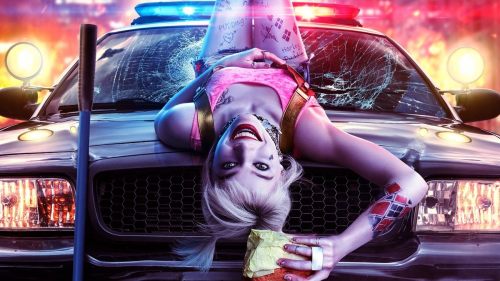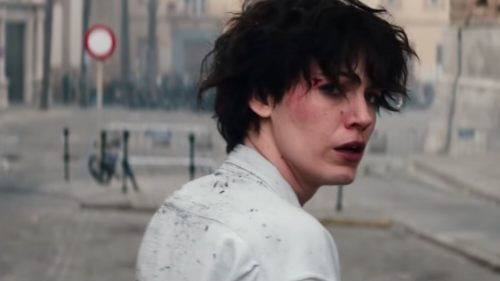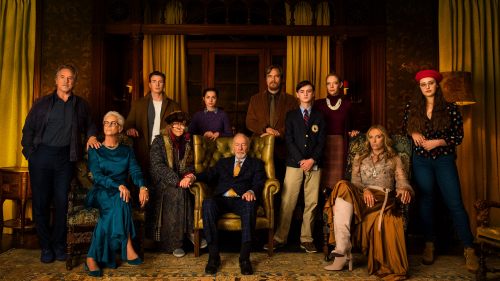THE RETURN OF THE TEXAS CHAINSAW MASSACRE At 20
Film history, especially the independent horror genre, is full of folks who quietly pitched in on some of the most groundbreaking achievements in cinema. Co-writers, associate producers, financiers: these are the cinematic midwives who are crucial to a movie’s very existence but who, thanks to that pesky auteur theory, are left out in the cold when it comes time to assign credit for these game-changing classics. When the dust settles and these films become cottage industries and household names, these comrades get nothing but a bit of residual legacy and, if they're lucky, a shared legal claim on any sequels and remakes.
Night Of The Living Dead is perhaps the most infamous wellspring for this particular phenomenon: John Russo, George A Romero’s one-time script collaborator, fashioned a 40-year career out of being the “co-writer of Night Of The Living Dead.” In the years since the 1968 classic changed the face of horror, Russo’s typewriter has issued sequels, quasi-sequels, prequels, books, comic books, how-to books and loads of original screenplays, most of which hitched their wagons to Russo’s debut screen credit. Bill Hinzman, the iconic cemetery zombie from the film, parlayed that role into a career as a regional filmmaker in the Pittsburgh area. This culminated in 1988’s Flesheater, in which Hinzman donned his costume from Night and spent 80-odd minutes pawing Yinzers’ breasts in front of 16mm cameras. While Russo’s and Hinzman’s post-1968 efforts laid bare the fact that these guys weren’t the actual creative talent of the Night Of The Living Dead gang, in my opinion these men were 100% entitled to cash in the way they did. They busted their asses on a movie for no money, and without their unsung efforts that classic might not exist today. Short of overseeing a dubious “special edition” re-edit of their one past glory, their endeavors to reap the rewards of their hard work is all fair play.
When the success of 1974's The Texas Chain Saw Massacre garnered director Tobe Hooper a career in Hollywood, co-writer Kim Henkel was seemingly left out of the equation. Henkel stayed in Texas and kept writing, providing the story concept for 1981’s The Unseen (a favorite) and scripting/producing the beloved 1983 independent film Last Night At The Alamo. But in 1993 Henkel, at the urging of Chain Saw’ co-producer Robert Kuhn, returned to his roots, writing and directing The Return Of The Texas Chainsaw Massacre. Henkel, 48 at the time, was reportedly reluctant to take on the project. But not taking it on amounted to leaving money on the table, so production launched in the brutal Texas summer of 1993.
The film that emerged from that sweaty shoot is certainly a bizarre and messy concoction. And it was a difficult birth: screened maybe once on October 7, 1994, the film was test-marketed, recut, shelved, sold off to Columbia/TriStar, and became the subject of several lawsuits (one story is that the film’s rising stars, Renee Zellweger and Matthew McConaughey, had talent agencies pressuring Columbia/TriStar to bury the thing). It was eventually trimmed down to 86 minutes, retitled The Texas Chainsaw Massacre: The Next Generation, and dumped into twenty-three theaters in August 1997. It earned a handful of positive reviews, but was mostly met with apathy or anger by the few who saw it.
Is it any good? Well, not exactly. Looking at it today, there’s no denying it’s cheap, clunky and, y’know, a tired fourth entry in a series of films about chainsaw wielding backwoods murderers. But it’s also got some genuine, original weirdness under the hood. It certainly feels less like a lazy bit of product in the wake of three more films in the franchise (with another on the way). Your mileage may vary, but with low-budget horror, there’s something about a scrappy, unloved underdog that compels us to meet it halfway. Sometimes all the way.
Set during prom night, The Return Of The Texas Chainsaw Massacre finds two teen couples crossing paths with a reconfigured Chainsaw clan. This time out the family is comprised of W.E (Joe Stevens), a poetry-quoting hayseed constantly trying to show off his book smarts; Vilmer (Matthew McConaughey), a sexy Alpha maniac with a knife fetish and a remote-control leg brace thrown in for good measure; and Vilmer’s squeeze Darla (Tonie Perenski), a crazy-eyed sexpot who’s fallen in with the family (inspired by a real-life Texas thrill-killer who boasted about having multiple orgasms from killing). And of course there’s Leatherface (Robert Jacks), reimagined here as, alternately, a mulleted, camo-wearing teen and, come dinnertime, a more ladylike transvestite.
Henkel's film is essentially a remake, albeit one with a stubborn streak. It’s hell bent in parts to simply replicate beats of the original - here’s the “girl on the meat hook” bit, here’s the part where the heroine jumps through the second floor window, here’s the dinner scene - but it’s also rife with self-conscious zigs where the original zagged. Its action is set almost exclusively at night, in contrast to the sun-bleached bulk of Hooper’s film. Unlike the first movie’s largely helpless Sally Hardesty, Renee Zellweger’s Jenny is a heroine updated for the post-Aliens era, given an emotional arc and a well of untapped inner strength. Where sexuality was largely absent from the original, here it’s front and center, from Darla’s fake-breasted maneater vibe, to Leatherface’s dinnertime wardrobe, to Vilmer’s sexually charged menacing of Zellweger’s Jenny. The onscreen violence is predictably ramped up from the original, but it’s not messy as much as it’s mean-spirited, miles from the giddy gore of Part 2. Most puzzlingly, the cannibalism angle is completely absent (the family orders take-out pizza for dinner).
There’s no getting around the film's shortcomings. The seams of a rushed production show more often than, say, is optimal. Editing is hurried and sometimes clumsy, stunt doubles are often too-visible. Though it was shot in the same region as the original, the dusty/foggy night shoots give no sense of location. Beyond the budgetary limitations, there’s also no shortage of questionable creative decisions. Leatherface is never not screaming during his chase scenes, his constant shrieking in direct competition with either his victims or the buzz of his saw, and the effect wears thin really quickly. Likewise, seeing ol’ Leather held at gunpoint with his hands up does his mystique no favors. It’s safe to say The Return Of The Texas Chainsaw Massacre is not Leatherface’s finest moment. Or second, or third finest moment.
But Leatherface is not the main threat here anyway, overshadowed at every turn by brother Vilmer. And maybe Matthew McConaughey announcing to a victim, “First, I’m gonna kill ya. It ain’t no fuckin’ biggie” doesn’t really pack the same existential wallop as the sudden deaths of the first film, but neither does it make for an empty retread. McConaughey’s Vilmer is beamed into this movie from another plane of existence, his amazing one-liners and quiet menace exploding into genuinely surprising fits of violence, and all looking very Method twenty years on. (We also get a bonus early appearance of McConaughey's patented “all right, all right, all right.”) Cinematographer Levie Isaacks often struggles to simply keep the actor's manic performance in focus. The young Texan’s movie star aura makes for a weirdly magnetic, polished version of the original’s unpredictable insanity, and his unhinged performance might constitute the closest thing this film has to actual merits worth recommending. (I’d bet money that Killer Joe director William Friedkin agrees.)
While McConaughey is the "fun" part, he's not the only thing worth exploring in this widely hated entry. Given the softness that followed in the rest of the 90s, Return is certainly in the running for meanest horror franchise entry of the decade. To wit: vapid teen Heather (Lisa Newmyer) goes onto the meathook at the 32-minute mark, yet she’s still alive nearly an hour later. In the interim she’s dragged through the woods, beaten with a stick, set on fire, and finally has her skull crushed by Vilmer’s hydraulic leg brace.
Heather’s particular sojourn of suffering nicely illustrates this film’s key deviation from the original. The Texas Chain Saw Massacre was at its core a young person’s nightmare of death; The Return Of The Texas Chainsaw Massacre seems to reflect the mindset of its pushing-50 creator, fundamentally altering what is, on the surface, an identical story. In 1974, Sally and her vanload of friends were an innocent and innocuous bunch. Even the annoying Franklin wasn’t simply thrown to the chainsaw-wielding lions for fun; there was something confrontational about the way that film invited us to cheer for his death. That’s not the case with the kids in Return, its protagonist roles evenly split between two meek pushovers and a couple of loud, obnoxious assholes. The latter two, clearly a 48 year-old man’s disdainful idea of teenagers, have been specifically designed to mine maximum enjoyment from their murders. There’s no ambiguity or shades of grey here; Henkel hates these fuckers, and he’s made it easy for us to join him in his hatred.
The victims’ acting has been called terrible elsewhere, but on closer inspection it seems as if they’re just playing it as broadly as it’s been written, like Heathers broad, the characters’ cartoonish awfulness very much intentional. From his first line of dialogue, you just know Barry (Tyler Cone) is someone you - and Henkel - are going to enjoy seeing sent to hell. He’s arrogant and misogynistic, rich and hateful, the kind of character begging for death. (Henkel actually has Barry say “Someone, please, kill me” in the film’s early moments.) His girlfriend Heather is vain and insipid, the kind of girl who frets in the mirror over the scratch she received in a car wreck that likely killed the other driver. Henkel fills Heather’s mouth with inane, stream-of-consciousness blathering that audiences are eager to see put to a stop. When it’s her time to go on the meathook, Henkel arranges for the vain Heather to have a mirror in which to watch herself dangle. Mean! While it’s admittedly fun seeing these monsters extinguished onscreen, one has to wonder about the shift in Henkel’s perspective. Twenty years earlier, in the waning days of the Vietnam War, Henkel co-authored a shattering cinematic depiction of the senseless death of young people. By 1994, Henkel seems to be firmly on the side of the family, deliberately engineering human teenage garbage for the Chainsaw clan to carve through, like a hot knife through rancid butter.
And then there’s the ending. That crazy, out of nowhere ending. If the Halloween sequels are guilty of diluting the mysterious power of The Shape with needless, convoluted backstory, The Return Of The Texas Chainsaw Massacre is downright treasonous in its betrayal of its predecessor’s terrifying ethos. You see, the Chainsaw family works for the Illuminati. Yep. In this film, turns out the universe isn’t an unpiloted killing machine grinding up everything in its maw; it’s all a plan by a mysterious shadow organization whose goal, according to Henkel, is “to institute a real confrontation with the horror of death” for a society that’s become “removed from the reality of it, the horror of it.” In other words, the unsettling effect the first film had on its audience has here become a character motivation.
In putting that subtext both on the surface and in the characters’ mouths, Henkel lessens the horror. The Illuminati is not, in my experience, a legitimately scary boogeyman. Rather, it’s a way to explain (away) something terrible and incomprehensible. It’s okay, everyone! Men who’ve been in power for thousands of years are behind it all! Someone is driving this bus! This is the comforting fairy tale of the UFO kook who thinks we all sprang from extraterrestrial seeds and are being checked on and looked after by alien overseers. It’s a bedtime story for the conspiracy nut who needs to believe someone rich and powerful is orchestrating all the bad things in the world. Philosophically, standing in contrast to the powerful existential message of the original (co-penned, mind you, by the same person), it’s akin to a one-time atheist frightened by their own mortality into finding religion.
But it’s also a fucking hoot. A man in a suit showing up via limousine to give the Chainsaw family a job performance review is a Python-esque turn of events, and I’d pay handsomely to be able to watch an audience experience that cold for the first time. You also have to give it credit for trying to take the obligatory story elements someplace new, and for sort of predating the Cabin In The Woods reveal by about 18 years. Moreover, it gets a pass from me where, say, the Halloween sequels’ “Thorn cult” business doesn’t, because there is zero continuity between this film and The Texas Chain Saw Massacre. The Halloween sequels kept piling onto the mythos, and making a mess in the process. That’s not the case here; aside from Part 2 the sequels are all soft reboots, standalone entries to take or leave as viewers see fit. The original masterpiece remains wholly untouched by this film, so hell, why not shake shit up?
The film’s loopy finale is also hard to hate because, on an auteur level, the Illuminati element plays like some kind of twisted autobiographical requiem. Darla tells Jenny, "You know how you hear about these guys who run everything but no one knows who they are?...Nobody, I mean NOBODY knows their names, and THAT'S who Vilmer works for." That certainly sounds like something to which guys like John Russo and Kim Henkel and all those cinematic midwives we talked about earlier could relate. What Henkel presents in The Return Of The Texas Chainsaw Massacre is not a continuation or even a retread, but a cranky old man’s do-over. He’s drafting an alternate universe in which all that groundbreaking nightmare fuel from 1974 wasn’t just random horror. It was all planned by an architect who, in Henkel’s new ending, steps out of the shadows and gets credit for orchestrating it all. Surely we can let him have that.








